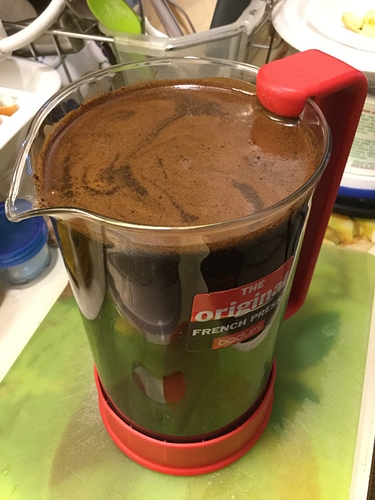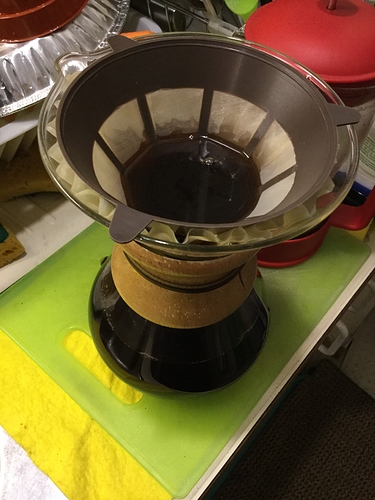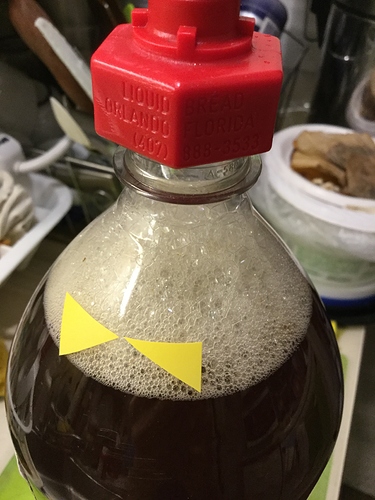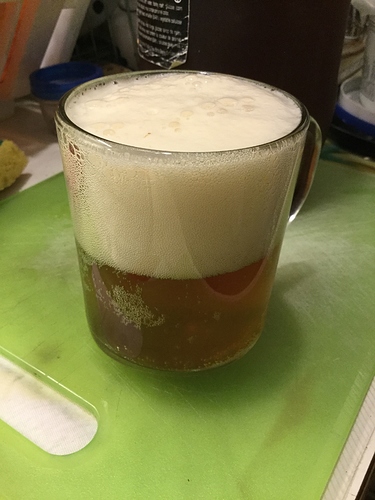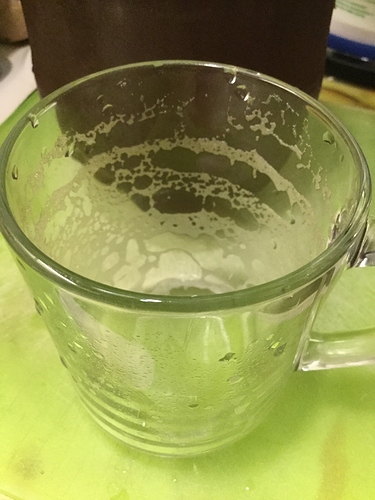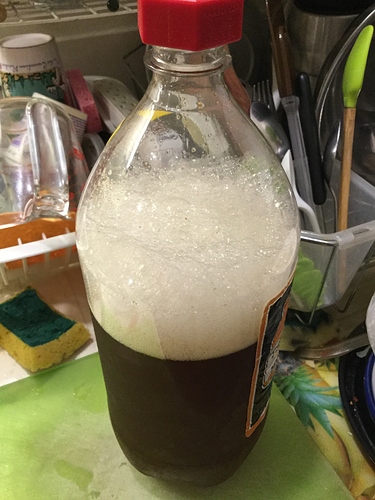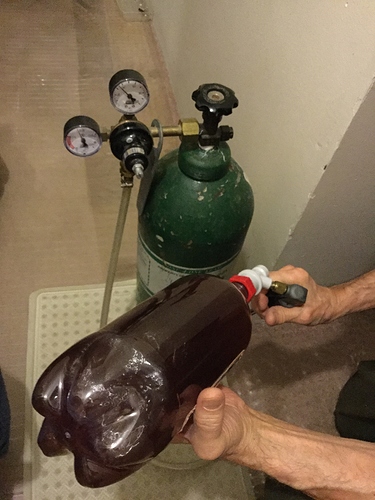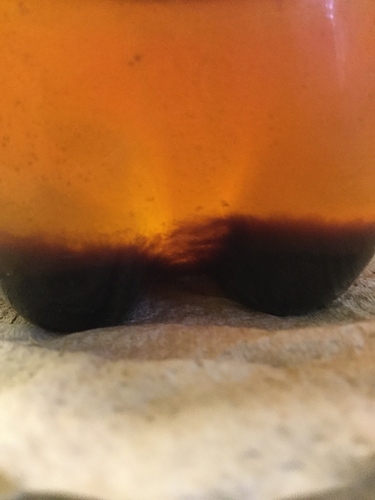I know you aren’t really “brewing” anything, but are you just mixing everything together or what is your process?
Mike's Excellent Zero Carb Beer Adventure 🍺
My first experiences with brewing were at the Univ of Maine in Orono in the mid-60s. At the time Maine had a top-notch agricultural college (maybe still does). Every fall from late Sept through Oct, the ag students sold apple cider in one gallon glass jugs. I was informed, unofficially of course, that if I set my jug of cider on the window sill of my dorm room for about a week or 10 days it would magically transform itself into ‘hard’ cider. And indeed it did! From that inauspicious beginning I moved on to mead, eventually beer and ultimately braggot, the happy marriage of mead and beer. One of the most popular beverages of the European Middle Ages - and mine!
Correct, it’s a mix not a brew. But it’s similar to using malt extract instead of malting your own grains. Someone else, the folks who produce Stock 84, did the grunt work to provide the ethanol. But the end beverage is my creation!
In preparation for Experiment #3, I started a 1 liter cold brew in my Bodum french press. That’s 33 gr of Tim Hortons Dark Roast ground coffee in 1000 gr of water. I added 25 gr of shaved orange peels and 20 gr of Madagascar Bourbon. I’m going to let it brew for 24 hours.
Instead of adding coffee to the brew mix 20 grams at a time, I decided just to go for 500 gr to see what happens. Also, my previous test batches were very cloudy and I determined that the addition of vanilla extract to the coffee creates the cloudiness. So I decided for Exp #3 to add the vanilla to the coffee brew mix and maybe the cloudiness will either settle out with the coffee grounds or get filtered out when I pour the mix through a double paper filter. So, I’ll find out. I decided to use orange peels for #3 instead of orange extract again just to see what happens.
Experiment #3 [Nov 22, 2019, 8 pm]
Base:
- 250 ml Stock - 84 V.S.O.P.
- 1750 ml filtered water (this results in 5% ABV)
Other stuff:
- 500 gr cold brewed coffee (mix: 33 gr of Tim Hortons Dark Roast ground in 1000 gr of water)
- 20 gr PC Black Label Madagascar Bourbon Vanilla Extract
- 25 gr orange peel shavings
- 10 gr Coffee Booster Collagen
- 1 gr generic gelatin
Notes:
-
I should have added 40 gr of vanilla to the coffee, since I only used half the brewed coffee I only got half the vanilla (i.e. 10 gr instead of the 20 gr I wanted), so don’t think the vanilla is going to be noticeable.
-
I brewed the coffee too long and it has a slight bitter edge. Nothing like adding hops! But next time I will either use less coffee or less brew time.
-
The orange peel added noticeable flavour to the coffee, but not as much as the orange extract.
-
I decided to use unflavoured gelatin instead of guar gum. It dissolved much easier. It also made the beer cloudy. It was quite transparent until I added the dissolved gelatin.
-
This is encouraging. After I filled the PET bottle and pumped in some CO2 there was a bigger head that lasted longer than at this stage of previous tests. When the bottle is full, there is not much head space for CO2 until the beer is chilled to 39°F and the CO2 starts to dissolve.
Results:
[Nov 25, 2019, 9:30 pm - added as an edit to comment #14]
-
Too much coffee! But not by much. Next time I’ll try 400 gr and I think that will be about right.
 There’s a little coffee bitterness, but not as much as I thought there’d be based on the taste of the coffee as brewed. The colour is a nice dark ale tone.
There’s a little coffee bitterness, but not as much as I thought there’d be based on the taste of the coffee as brewed. The colour is a nice dark ale tone. -
Too little vanilla. As noted originally, I should have doubled this to 40 gr and will do so the next time.
-
Too little orange. OK, the orange peels didn’t work. So back to extract.
-
Coffee Booster collagen and gelatin seem to have worked very well together. There’s lots of body and mouthfeel and a very nice head that lasted just as long as any beer head I’ve ever made!
-
Overall, everything is moving in the right direction. Aside from the somewhat overtly coffee flavour, this is tasting quite good.Filtering the brewed coffee through a nylon micro-filter and two paper filters:
Have you tried putting the vanilla bean in the alcohol? It might extract more flavor.

That’s a whole new ballgame! Don’t think I’m going down that road any time soon. Quality extract is readily available, easy to work with and consistent - good enough for what I’m using it for. I’m a beer maker with lots of experience mixing concentrated components, so using extracts appeals to me. I’m not adverse, however, to the idea of adding a bean or two to a bottle of brandy to find out what it does for the taste.
Experiment #3 [Nov 22, 2019, 11pm]
The points of the two triangles meet at the 2-liter ‘fill line’ at about 70°F. At the time of this photo the temperature of the beer is about 42°F. Pressure is 36 psi. The liquid level is 3/4 of an inch below the initial fill line. Foam from the last CO2 charging fills the head space right up to the ring in the bottle neck. This is very good! This is the volume of foam generated by real beer under the same conditions. I find it very encouraging. When I added the coffee into the empty bottle it made a ‘head’ that persisted until I added another liter of water/brandy mix. I also like the colour much more.
[Nov 25, 2019, 9:30 pm - added as an edit to comment #14]
-
Too much coffee! But not by much. Next time I’ll try 400 gr and I think that will be about right.
 There’s a little coffee bitterness, but not as much as I thought there’d be based on the taste of the coffee as brewed. The colour is a nice dark ale tone.
There’s a little coffee bitterness, but not as much as I thought there’d be based on the taste of the coffee as brewed. The colour is a nice dark ale tone. -
Too little vanilla. As noted originally, I should have doubled this to 40 gr and will do so the next time.
-
Too little orange. OK, the orange peels didn’t work. So back to extract.
-
Coffee Booster collagen and gelatin seem to have worked very well together. There’s lots of body and mouthfeel and a very nice head that lasted just as long as any beer head I’ve ever made!
-
Overall, everything is moving in the right direction. Aside from the somewhat overtly coffee flavour, this is tasting quite good.
Collagen/gelatin foam rings on the beer mug:
One significant feature of the forced carbonation system I built is that it enables me to recarbonate PET bottles as the contents are consumed. So, the last drop is just as carbonated as the first. Here’s the PET bottle recharged to 36 psi after I drank tonight’s samples:
[Nov 28, 2019, 9:00 pm]
In preparation for Experiment #4, I started a 450ml cold brew in my Bodum french press. That’s 16gr of Tim Hortons Dark Roast ground coffee in 450 gr of water. I added 5 gr of Watkins Pure Orange Extract and 20 gr of Madagascar Bourbon. I’m going to let it brew for 20 hours. This should give me pretty close to the vanilla and orange concentration I want. I’m going to use 400 gr of this, allowing for the coffee grounds to absorb about 50 gr or so of water.
Experiment #4 [Nov 29, 2019, 7 pm]
Base:
- 250 ml Stock - 84 V.S.O.P.
- 1750 ml filtered water (this results in 5% ABV)
Other stuff:
- 400 gr cold brewed coffee (mix: 16 gr of Tim Hortons Dark Roast ground in 450 gr of water)
- 20 gr PC Black Label Madagascar Bourbon Vanilla Extract
- 5 gr Watkins Pure Orange Extract
- 10 gr Coffee Booster Collagen
- 1 gr generic gelatin
Notes and Results (see below):
Coffee Extract - Do It Yourself
Coffee Extract - Do It Yourself
Experiment #4 [Dec 4, 2019, 10:45 am]
Not good. I suspect the sediment is the result (primarily) of brewing less coffee and draining more of it out of the French press. It could also be the result of a chemical reaction between the gelatin and the coffee. I have not yet tasted this batch, so I don’t know the effect on the overall flavour. I’m not afraid of sediment in beer - I made lots with more/less of it. I could siphon out most of the beer leaving the sediment. More after I’ve tasted this.
Experiment #4 [Dec 5, 2019, 11:30 am]
Two taste tests
First, poured very carefully to avoid any sediment. The second agitated to include some sediment.First, sediment-free pour: perfectly clear, nice flavour, but very weak carbonation, a ‘ginger-ale’ head that did not last very long (less than a minute).
Second, some sediment: cloudy, flavour slightly more bitter and again very weak carbonation, the ‘ginger-ale’ head/retention again.
Although the taste is acceptable, better without the sediment, I think what happened is that the gelatin coagulated out, taking some of the coffee out of solution with it. The only reason I can think of for this to happen is the coffee-making procedure. Instead of brewing a liter of coffee and using 500 ml, I brewed 450 ml and used 400 ml of it. I suspect I got something out of the more concentrated coffee that I left behind in the less concentrated coffee the first time around.
Conclusion
First, need to brew a full liter of coffee and use only half (400 ml). And, maybe run it through 3 paper filters to make sure as little solids as possible get through. Second, instead of adding vanilla/orange to the coffee use a flavoured coffee. My entire reason for making a smaller total amount of coffee in this experiment was to reduce the amount expensive vanilla extract needed. If I go with a flavoured coffee, I eliminate the need to add any vanilla and/or orange extract. For my first experiment with flavoured coffee I'm going to use this one. I've made coffee with this before and like it's flavour. It has hints of vanilla and the macadamia is just enough to add a bit of earthy flavour.Have you considered using instant espresso?
Also Mike since you are an avid ketone tester I have a couple of questions regarding alcohol. What does 2oz of Whiskey or other hard alcohol do to your ketones? And yesterday I was wondering what’s happening with the new high tech tester you ordered a while back? I assume if you got it already you would post about it. 
I haven’t thought of using instant coffee because I think it will produce lots of sediment, though I would run it through multiple filters as per others, so maybe not a problem. I don’t like instant coffees generally taste-wise. I haven’t used instant for so many years it’s off my radar! 
Some time ago I had proposed a ketone test with alcohol consumption. You can see my hypothesis and results here:
My Lumen is supposedly shipping in the Dec-Jan time frame. Due to Christmas shipping delays I don’t expect it until mid-late January:
Your 5% ABV is based off the filtered water added, but doesn’t seem to be taking the additional water in the coffee into account.
Total volume of water includes the coffee. Total volume of ‘beer’ is 2 liters. I’m using a 2-liter PET bottle. The two yellow triangles meet at the 2 liter level. Under 36 psi the level is depressed somewhat from the initial fill point.

